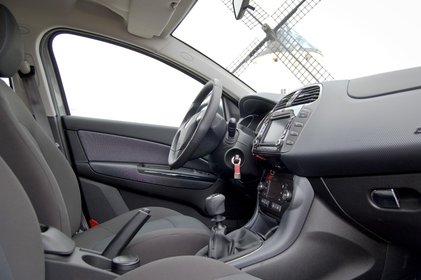
27/02/2017
Car Market, European producers favor small-engine vehicles
Dino Collazzo
Small-size engines favor fuel economy and lower emissions thanks to their reduced power. As the economy begins to recover, the average engine size is increasingly reduced throughout Europe with a positive impact on the overall quality of the air. Here is a list of countries where emissions are lower and the air is cleaner
Cars with low-engine sizes, reduced fuel consumption and reduced Co2 emissions into the atmosphere. The automobile market closes the year 2016 with 1 million 824 thousand new registrations and blazes a trail towards a more sustainable mobility in environmental terms. Still focusing on the environment, the European Commission has recently approved a series of stringent type-approval tests. Called "Rde3”, this package provides for an extension of fuel consumption and emissions tests, to be made on the road and no longer on a test bench, including detection of particulate emissions. The road map requires a mandatory conformity to these rules by September 2017 for all new types of vehicles while by September 2018 this will also apply to all new vehicles. Waiting to see the effects, something seems to have been moving, in recent years, at least as far as new registrations are concerned. In fact, according to Acea (European automobile manufacturers association) the average engine size in newly registered vehicles has decreased drastically throughout the “old continent”. From 2007 to 2015 the EU has, in fact, witnessed a 7.8% reduction. In Italy the average engine size went from 1,558 cc to 1,476 cc ( -5.3%). Better results, if we take a look at other major European countries, were reached by Spain (-12.2%), France (-11%), Germany (-8%) and the United Kingdom (-7.6%). Low displacement vehicles have a positive influence in terms of environmental impact as it leads to a reduction in fuel consumption and lower emission of both Co2 as well as all other pollutants produced during combustion and subsequently released into the atmosphere. According to the latest report published by the European Environment Agency (Eea) all European countries recorded a noticeable reduction in emissions. Automobiles sold in 2015, still according to the Eea, reported an average emissions level of 119.5 grams of CO2/km, scoring a 27% reduction compared to 2004, well within the 130 grams target set by Brussels last year. More specifically, the member states with the highest numbers of new registrations - Germany, France, Italy, Spain and the United Kingdom – are the ones which contributed the most to the reduction in Co2 emissions in absolute terms.
Infographic 1: Engine size
The map shows the average engine size recorded on all new car registrations in 17 European countries between 2007 and 2015 (Acea – data).
Infographic 2: Emissions gCo2/km
The map indicates Co2 emission variations (expressed in %) in 17 European countries between 2007 and 2015 (Acea – data). Data about Norway and Switzerland are missing from the report.
Infographic 1: Engine size
The map shows the average engine size recorded on all new car registrations in 17 European countries between 2007 and 2015 (Acea – data).
Infographic 2: Emissions gCo2/km
The map indicates Co2 emission variations (expressed in %) in 17 European countries between 2007 and 2015 (Acea – data). Data about Norway and Switzerland are missing from the report.






